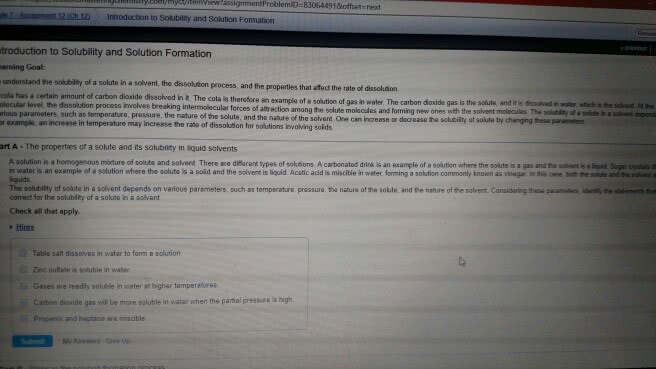CHEM 6B Chapter Notes - Chapter 12: Sulfuric Acid, Molar Concentration, Chemical Equation
Document Summary
Chapter 12: chemical calculations for solutions: solutions. Solution: a mixture that is homogenous at the molecular level. Components of a solution are the pure substances that are mixed to form the solution. The components don"t have to be solid and a liquid. There can be many types of solutions. Most common type of solution: solid dissolved into a liquid. Saturated solution: the maximum quantity of solute is dissolved. It is important to realize that the solubility of a substance is the maximum quantity that can be dissolved in a saturated solution at a particular temperature: molarity. The concentration of solute in a solution, describes the quantity of solute dissolved in a given quantity of solvent or a given quantity of solution. Molarity = moles of solute/liters of solution: electrolytes. Electrolytes: solutions that contain ions and conduct an electric current. Aqueous solutions that do not conduct an electric current are called nonelectrolytes.


